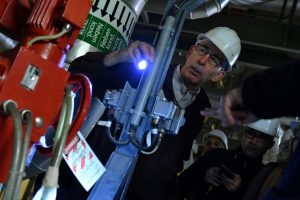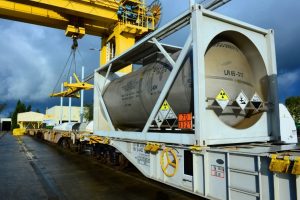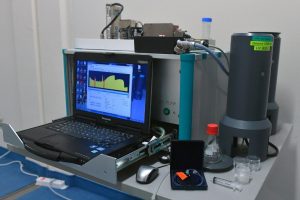Safety is the priority for the European nuclear industry. Maintaining a high level of safety is non-negotiable for the long-term operation of existing nuclear power plants, for new-build projects and for gaining public acceptance of and confidence in nuclear technology. In every country that has a nuclear programme or is embarking on one, the safety of all nuclear facilities is governed by stringent laws that are overseen by an independent regulator.
At EU level, the Safety Directive adopted in 2009 and revised in 2013 establishes a framework for nuclear safety based on the principle of the further harmonisation of safety standards at nuclear installations across the EU.
At international level, the International Atomic Energy Agency (IAEA)’s safety standards provide a system of fundamentals and guidelines for ensuring safety. The standards reflect an international consensus on what constitutes a high level of safety at nuclear plants and are applicable throughout the entire lifetime of facilities and activities.
Nuclear has been a source of clean energy and pioneering for more than more than half a century. All nuclear facilities are operated under the strict control of the national regulatory authorities, who make sure operators are making the investments needed to guarantee safety at their plants. A strong and independent regulator is the cornerstone of a safe nuclear power programme. The nuclear industry is committed to continuous improvement at all its facilities and very year operators invest a huge amount of capital in improving safety at their plants.

Figure 1: Hands-on Training for Safety Regulators, Source: IAEA
Establishing a strong safety and security culture is one of the fundamental management principles for an organization dealing with radioactive material, and in the safe operation of nuclear facilities. Such a culture influences the organization’s structure and style, as well as the attitudes, approaches and commitment of individuals at all levels in the organization.
The use of ionizing radiation in medicine, energy production, industry, and research brings enormous benefits to people when used safely. However, the potential radiation risk must be assessed and controlled. International safety standards and practices have been established to protect the health and minimize the danger to people’s life and property. The 3 principles of radiation protection are as follows1 –
Justification – is the exposure situation beneficial overall? i.e., do the expected benefits to individuals and to society outweigh the harm?
Optimisation – determining what level of protection and safety would result in the magnitude of doses, the number of individuals subject to exposure and the likelihood of exposure being as low as reasonably achievable.
Dose Limit – a value of individual dose that is used as a parameter for optimisation for the source.
Combined, these 3 principles make up what constitutes the ALARA principle – as low as reasonably possible.
There is a risk that nuclear or other radioactive material could be used in criminal or intentional unauthorized acts, creating a threat to international security. There are strict rules and measures on national and international level to prevent radioactive material to fall into wrong hands. The IAEA is one of the key players who helps policymakers and experts worldwide to improve nuclear security, manage radioactive sources and combat proliferation.

Figure 2: Safe Transport by Train. High level radioactive waste and uranyl nitrate shipments by rail. Valognes railward, France.2
As a result of the increased use of radioactive substances in, for example, industry, medicine and agriculture, shipments have become more frequent and larger in volume. Each day thousands of shipments of radioactive materials, including waste and spent nuclear fuels, are transported globally.
To secure the safe transport of those radioactive materials, an international framework has been established that combines regulatory requirements, package certification, inspections and a monitoring system. IAEA assists in strengthening this framework through the implementation of its transport regulations, ensuring the safe and secure packaging and handling of these materials. They also promote the implementation of transport safety regulations, which has resulted in an exemplary worldwide transport safety and security record for over 50 years.
Effective national and global response arrangements and capabilities are essential to minimise the impacts from nuclear and radiological incidents and emergencies. The international Emergency Preparedness and Response (EPR) framework, which is based on the international legal instruments, is maintained by the IAEA.
Nuclear power plants are equipped with multiple safety systems able to deal with a wide range of abnormal operating conditions. In the unlikely case of a severe accident, plant operators use guidelines developed specifically for the purpose. They also have well-proven emergency operating procedures that help operators achieve a stable and safe end state. However, the most severe circumstances can result in damage to the nuclear fuel and the containment structures, leading to a possible release of radioactivity to the environment.
To protect the public and the environment from the consequences of a nuclear power plant accident, each plant operator establishes a severe accident management programme, which is kept under constant review and development. The main objective of the guidelines used to design such programmes is to utilize any available equipment at the nuclear power plant to terminate core damage, maintain containment integrity and minimize the release of radioactivity from the site.

Figure 3: Safeguards Equipment for IAEA inspections, Source: Dean Calma / IAEA2
Through a set of technical measures, or Safeguards, the IAEA verifies that States are honouring their international legal obligations to use nuclear material and technology only for peaceful purposes. Its independent verification work allows them to play an indispensable role in preventing the spread of nuclear weapons.
The objective of IAEA Safeguards is to prevent the spread of nuclear weapons by the early detection of the misuse of nuclear material or technology. This provides credible assurances that States are honouring their legal obligations that nuclear material is being used only for peaceful purposes.

References
1 IAEA. (2018) – Safety Glossary: 2018 Edition
2 Dean Calma/IAEA – Safeguards Equipment for IAEA inspections. URL: https://www.flickr.com/photos/iaea_imagebank/40910354712/in/album-72157691683113922/